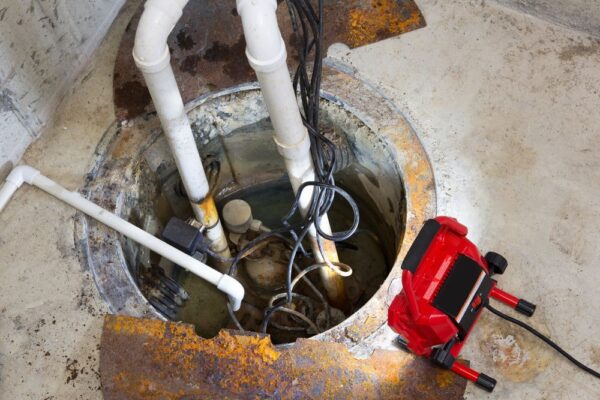Introduction
Homeowners often underestimate the potential risks associated with water damage, particularly in vulnerable areas like basements. Water damage can lead to structural issues, mold growth, and a range of health hazards. In this comprehensive guide, we will delve into the crucial role that sump pumps play in safeguarding homes from water damage. As we explore the mechanics behind sump pumps, their installation and maintenance, and their real-world effectiveness, readers will gain a thorough understanding of how these devices act as silent guardians against potential flooding.
Understanding Sump Pumps
Sump pumps are specialized devices designed to prevent water damage by efficiently removing excess water that accumulates in a sump pit. This pit is typically located in the basement and collects water that may seep in through the foundation or accumulate during heavy rains. The basic components of a sump pump system include the pump itself, a float switch, and a drainage pipe. There are two main types of sump pumps: pedestal pumps, which have the motor mounted above the pit, and submersible pumps, which are placed underwater.
The Science Behind Water Damage
Water damage can have severe consequences, ranging from compromising the structural integrity of a home to fostering mold growth, which poses health risks to inhabitants. Common causes of water damage include leaks in the roof, foundation cracks, and poor drainage around the home. It is crucial for homeowners to understand these potential issues to take proactive measures in preventing water damage.
How Sump Pumps Operate
Sump pumps operate through a simple yet effective process. When water in the sump pit reaches a certain level, the float switch triggers the pump to activate. The pump then pumps the water out of the pit and away from the home through a drainage pipe. Submersible pumps are particularly efficient as they operate underwater, reducing noise and saving space. Various mechanisms, including check valves, prevent water from flowing back into the pit after pumping.
Installation and Maintenance Tips
Proper installation is crucial for the effectiveness of a sump pump system. Homeowners should consider factors such as the pump’s placement, the type of pump, and the size of the sump pit. Regular maintenance is equally important to ensure the pump operates optimally. This includes checking the float switch, cleaning debris from the pit, and testing the pump regularly.
Sump Pumps in Action: Real-Life Scenarios
Real-life scenarios highlight the tangible benefits of sump pump installations. In countless homes, sump pumps have proven to be invaluable in preventing basement flooding and mitigating water damage. Consider the case of a family in a flood-prone area whose basement remained dry during a torrential downpour thanks to a reliable sump pump. Such anecdotes emphasize the practical effectiveness of these devices and reinforce the importance of their proactive installation.
Choosing the Right Sump Pump for Your Home
Selecting the right sump pump involves careful consideration of several factors. Homeowners should evaluate the size of their basement, the average water inflow, and the pump’s horsepower. Pedestal pumps are ideal for smaller spaces, while submersible pumps are better suited for larger areas with higher water volumes. Consulting with professionals and considering the specific needs of the home will guide homeowners in making informed decisions.
Sump Pump Accessories and Upgrades
Enhancements and accessories can further optimize the performance of sump pump systems. Battery backup systems, for instance, ensure that the pump continues to function during power outages, a common occurrence during severe storms. Additionally, features like alarms and Wi-Fi connectivity provide homeowners with real-time alerts and remote monitoring, adding an extra layer of convenience and peace of mind.
Common Misconceptions about Sump Pumps
There are several misconceptions surrounding sump pumps that deserve clarification. Some homeowners may believe that these devices are only necessary in flood-prone areas, but the truth is that any home with a basement can benefit from a sump pump. Addressing these misconceptions helps dispel myths and ensures that homeowners make informed decisions about protecting their homes from potential water damage.
Conclusion
In conclusion, sump pumps play a pivotal role in safeguarding homes from the damaging effects of water infiltration. Understanding their operation, choosing the right pump for your home, and implementing regular maintenance are key steps in ensuring their effectiveness. As we’ve explored in this comprehensive guide, sump pumps are not just a precautionary measure; they are essential components in maintaining a dry and secure home environment. By investing in a reliable sump pump system, homeowners can fortify their defenses against water damage and enjoy the peace of mind that comes with a well-protected property.
